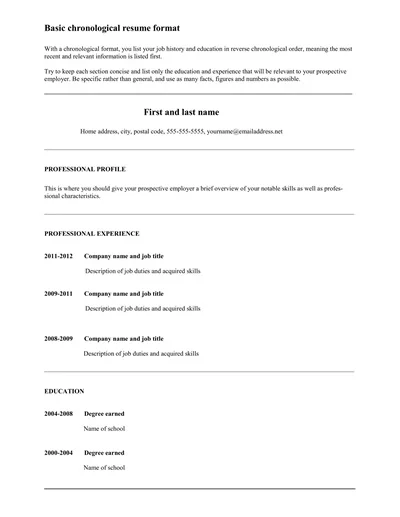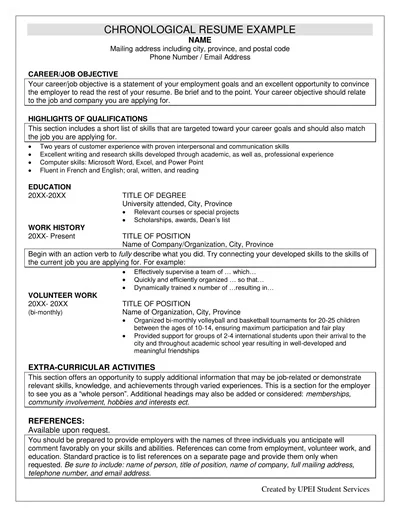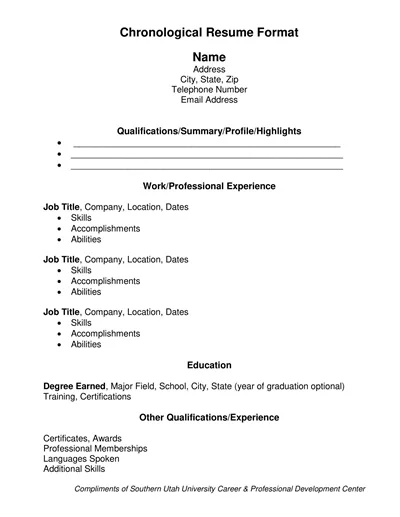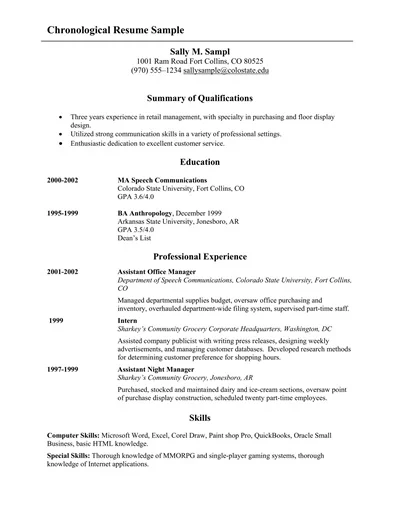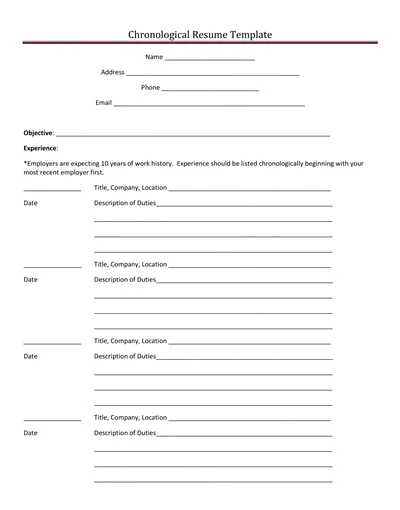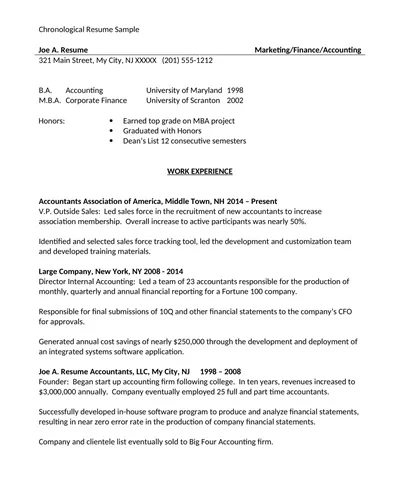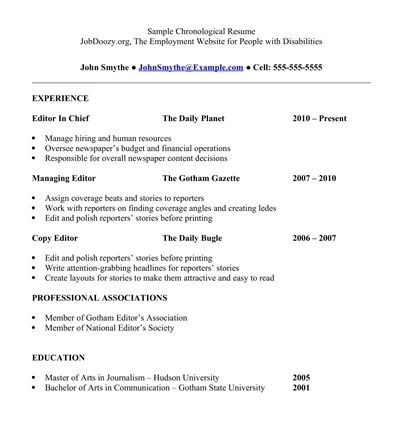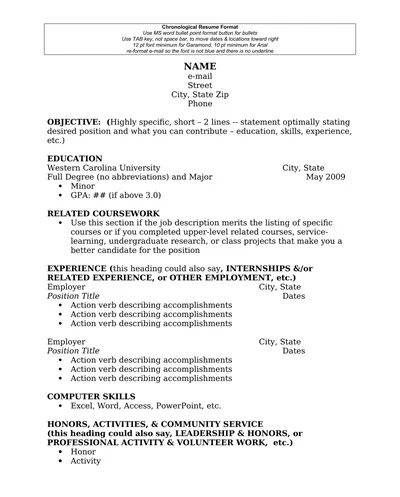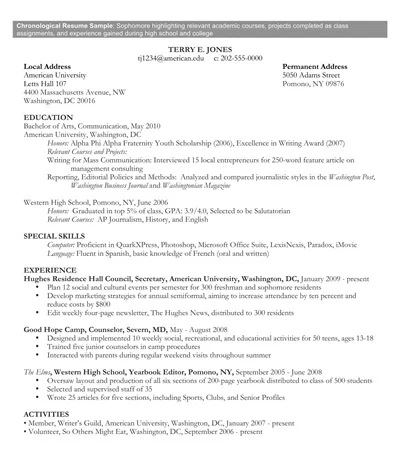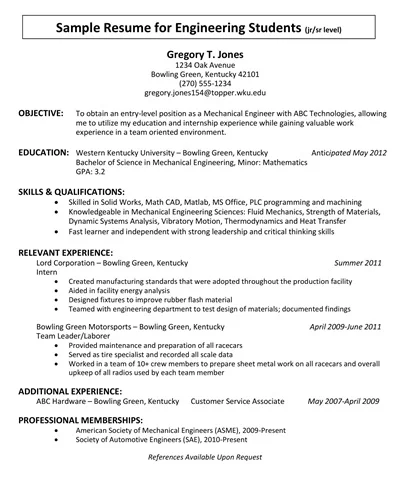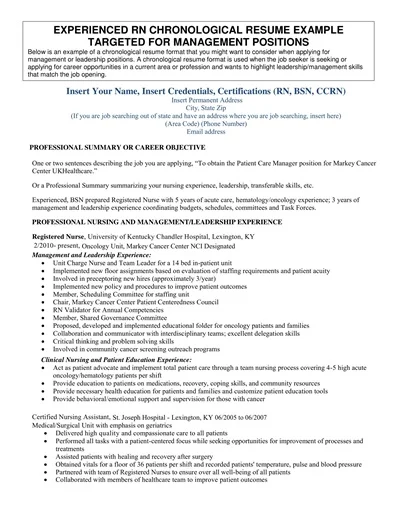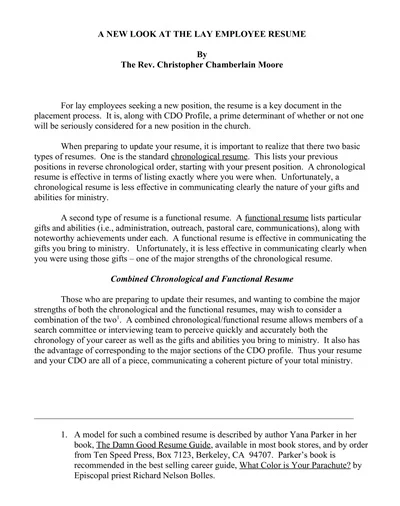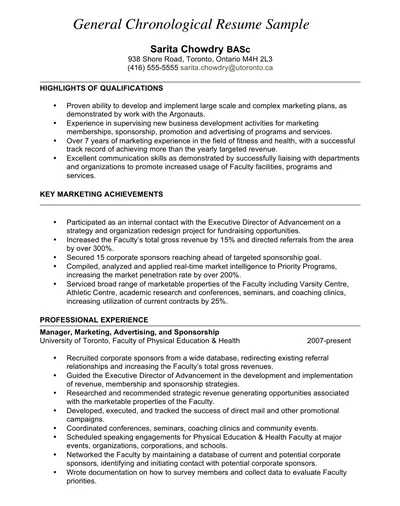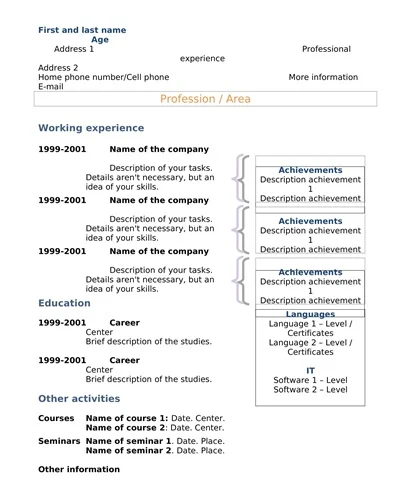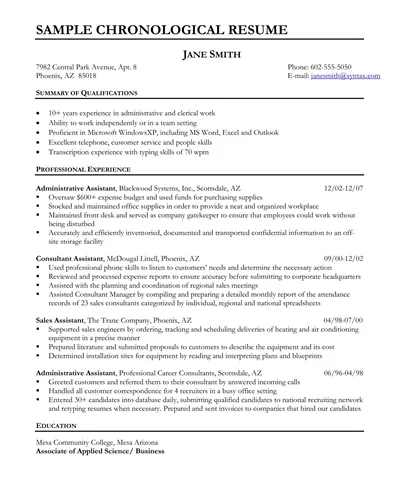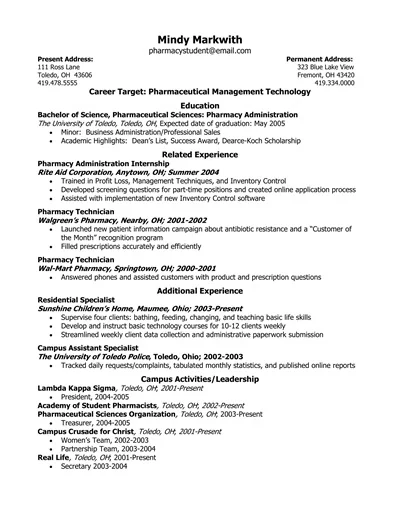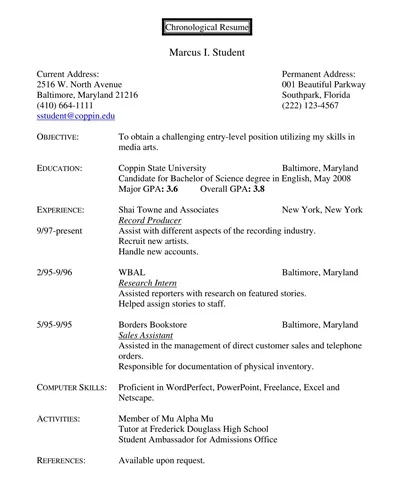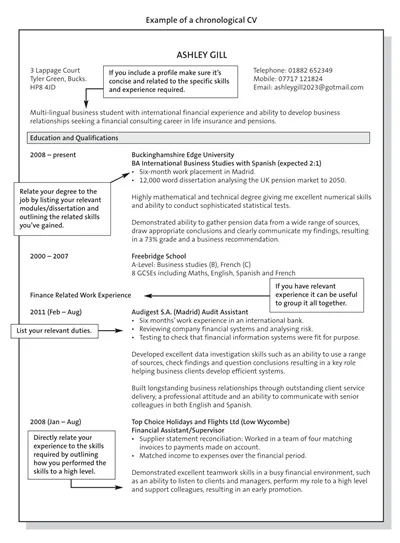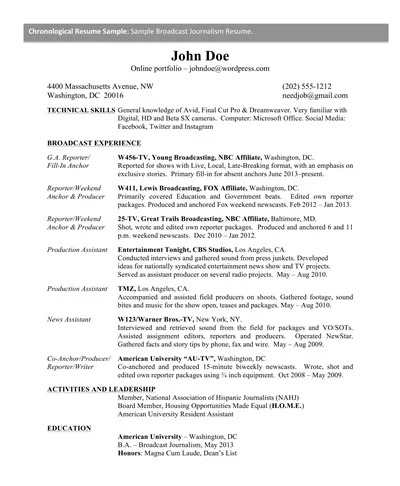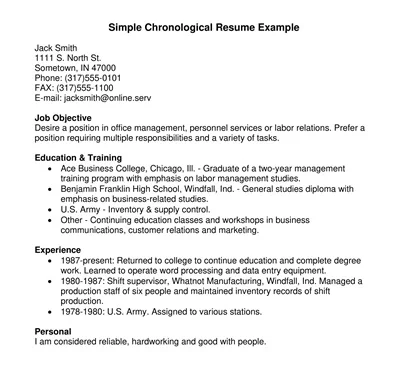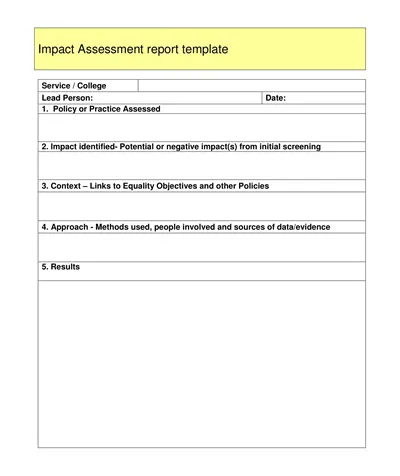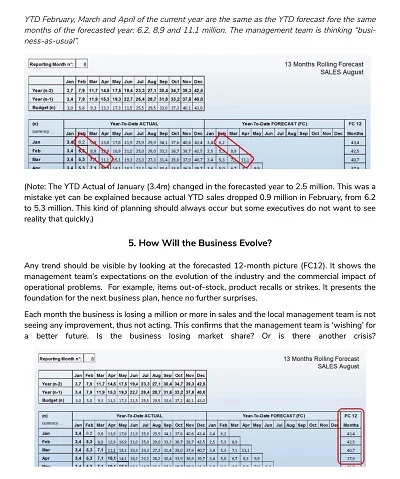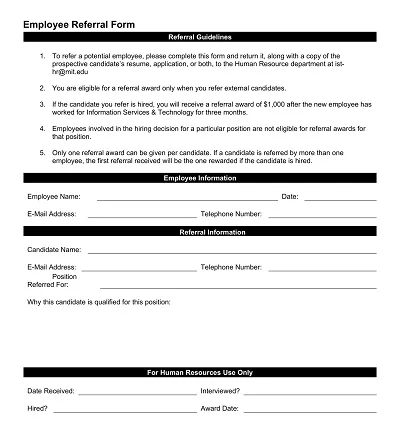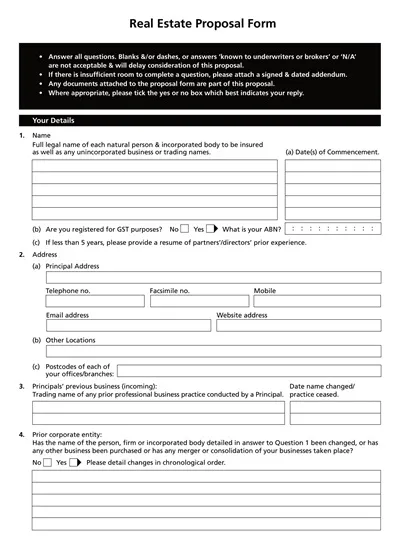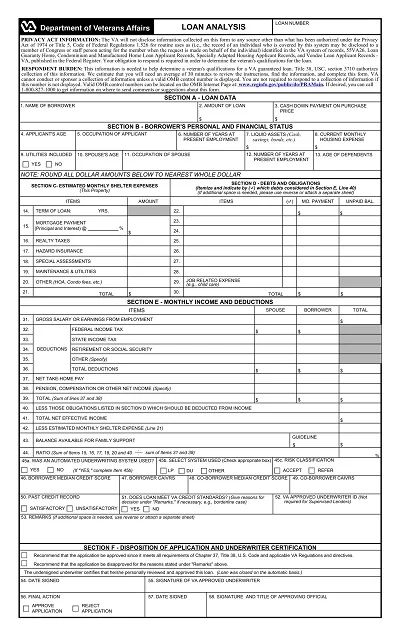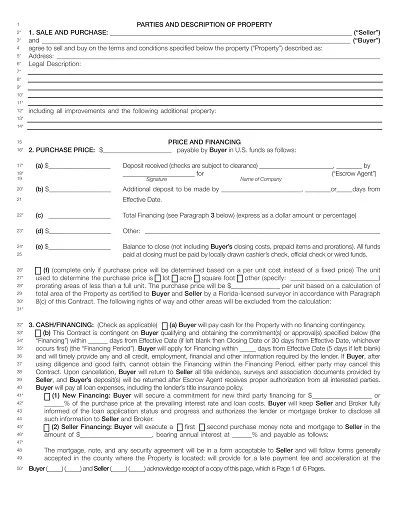A Chronological Resume Template is one of the oldest and commonly used resume templates that involves arranging the information about an applicant, particularly the work experience in the reverse chronological order, meaning that the latest position will be at the top.
This format not only demonstrates the candidate’s past employer but also exhibit how the candidate has evolved over the years within his or her chosen line of work. This is particularly helpful for persons who have been engrossed in the workforce and for the instances where the candidate is searching to work only within a specific sector, as it presents the progressive and rigorous journey charted throughout their career.
Download Free Simple Chronological Resume Templates
What Is a Chronological Resume?
A chronological resume is one of the resumes work history format that arranges the candidate work history in the backward chronology order starting with the current or latest company.
It may be used to demonstrate licensure or certification, or to demonstrate how an individual has advanced his or her career in the field. Although it is general for writing personal bio, is particularly efficient for those individuals who have a stable work experience and a clear history timeline, since this type of format highlights experience chronologically on career timeline.
What to Include in a Chronological Resume
A chronological resume, structured around the timeline of your work history, should prioritize the following key elements:
- Contact Information: On the top right, which should be neatly aligned with the text, enter your name, phone number, your E-mail address, and, if desired LinkedIn account or your personal/professional webpage.
- Objective or Summary Statement (Optional): A short practical part where you state your intended jobs and what you will contribute to the employers present.
- Work Experience: Arrangelist your jobs based on the most recent one first. When listing your previous position under a specific company, provide your job title, the company’s name, its location and the dates of your employment. Each position should be listed with specific responsibilities and accomplishments placed under each bullet point.
- Education: Just like your work experience, record your education in the decreasing order of the time you attained it. Make sure you mention the degrees attained, institutions attended and the dates you were attending the institutions. You may also need to list honours/ awards among the external achievements.
- Skills: Emphasize certain technical abilities by highlighting particular handsome or soft skills that may be necessary for the job that you are applying for.
- Certifications and Professional Development: Six years of work experience should be mentioned here along with any extra training or certifications acquired during your training program or in your field of specialization.
- Additional Sections (Optional): Some additional sections to consider depending on your area of study may also include publications, conferences, professional organizations or organizations where one acts as a volunteer.
The understanding of each section of your resume as well as the synergy of each part of the chronological resume will enhance your resume’s effectiveness.
Who Should Use a Chronological Resume and Why?
Chronological resume is useful for those who have stable employment, who remained in the same industry, and want to progress in rank further. This format is best adopted by those whose work entails constant career progression in one field as it affords a client a chance to depict his /her growth and development in that line of work.
This format also makes it easy for employers to observe the evolution of duties, that are frequently grouped by years of experience, which makes it convenient for individuals with a progressive career growth in their respective field.
Chronological resume will be useful for professionals who can boast of their years of experience in certain fields because this format emphasizes long-term employment and experience, which will be useful for those employers who are looking for a candidate with extensive practice in a certain industry and with no gaps on their way.
Tips for Writing the Chronological Resume
As stated earlier, most types of resume use a chronological format, and this kind of resume mainly focuses on the experiences of the candidate. Here are some tips to help you write an effective chronological resume:
Start with Your Contact Information
Post your full name, your contact phone number, email address and LinkedIn account at the top of each resume. It is on you to make certain that this information is updated and correct.
Write a Compelling Professional Summary
Begin with a small section that includes your employment history, necessary experience, and personal president to a new employer. Adapt this section emphasizing positive achievement and academic background that would suit the job position that you are applying for.
List Your Work Experience in Reverse Chronological Order
Include your timespan of work experience and give the details of your previous occupations, beginning from the most recent employment you have held. When listing the companies, make sure you list down your position held at the firm, the name of the firm, place of work, and the working period. In each role identify major duties duties, achievements, and the relevant skills you learned during that period of time. Remove words that refer to the fact that you are applying for a job and employ what you’ve done and how you’ve helped others as keywords.
Highlight Your Education
In this section, follow the experience with your academic achievements and any other certified results you might have. This should state the degree obtained, the name and address of the institution, and the date when one graduated. Although the reverse chronological order is more common and preferred by most job seekers, there are specific cases in which you might arrange your resume backwards chronological order: recent graduate: if you have just graduated and your education is closely related to the job, you can list it just before the work experience especially if the latter is limited.
Include Relevant Skills and Certifications
Finally, conclusion should include summary on skills and certifications. Mention any other skill which is not best captured in any of the experience and education knowledge that you possess. This can be in the form of language skills, useful computer skills, relevant certifications or licences among others.
Use Keywords from the Job Description
To ensure that you match the requirements of the job description, you should ensure that you use keywords and phrases from a job description throughout your resume. This will assist in bringing your resume past ATS, as well as making it appealing to the hiring manager.
Proofread for Errors
Also, after writing or rewriting your resume from the initial statement make sure you read it once more with focus on checking for typing mistake or even grammatical mistakes. At the end, you may also wish to reconnect with a friend or mentor to revisit it and see if there’s any error you have overlooked.
Chronological Resumes Pros and Cons
Another resume type is called chronological and it is one of the most popular and widespread formats today. In this resume format, the relevant work experience is listed by year, beginning with the most recent job. This format is especially important if you have changed jobs often or if you have moved up within the company, as it demonstrates your evolving experience and advancement.
Pros:
- Clarity and Order: Although they record your working experience in sequential format, chronological resumes depict your career metamorphosis and promotions in the years you have served. It is also beneficial to employers because they can easily track your career path and where you are heading to.
- Familiar Format: This format is familiar to most employers which results in faster evaluation and answer to your application.
- Highlight Career Growth: They are especially good for signifying career progression, especially if you have risen in the ranks of your sector or branch.
Cons:
- Gaps in Employment: Unemployment breaks are apparent, which can be viewed as negative by potential employers and recruiting companies.
- Less Flexible: However, this format is a less suitable one for those Individuals who are planning to switch over to a new field or those, who want to focus on the certain valuable skill-sets, which are not necessarily reflected in their employment history.
- Can Favor Longevity: Some of the qualifying candidates may have short work experience or are just entering the job market and therefore may not be able to match the experience of the qualifying candidates.
How to Write a Chronological Resume Template
A chronological resume format of work experience usually arranges the information accordingly from top to bottom as follows:
Here’s how to structure it:
- Contact Information
- Name
- Phone Number
- Email Address
- LinkedIn Profile (optional)
- Address (optional)
- For what purpose was the study done? Or Objective/Summary of the Study (optional)?
- Executive summary in the form of a few lines that describe the candidate’s planned or intended course of action in a given organization and what the candidate can offer to the company in question.
- Work Experience
- Job Title
- Company Name
- Location (City, State)
- Employment History in Detail: Employment dates including the month and year.
- Lists of duties and accomplishments on the job that its holder is applying for, preferably in point form.
- Education
- Degree
- School Name
- Location (City, State)
- Month and Year of intended Graduation
- Class Level, Honors and/or Achievements (if any) related to the area of study.
- Skills
- The list of specific and general skills from the technical and interpersonal point of view.
- Make sure that these are what are needed or wanted in the respective job positions you are eyeing for.
- Certifications and Professional Memberships
- Certification Name
- Issuing Organization
- Issue and expiration date of any kind (if exist)
- Additional Sections (optional)
- Awards and Honors
- Languages
- Volunteer Experience
- Projects
- Hobbies and Interests other than business/ employment if they are related to the job.

